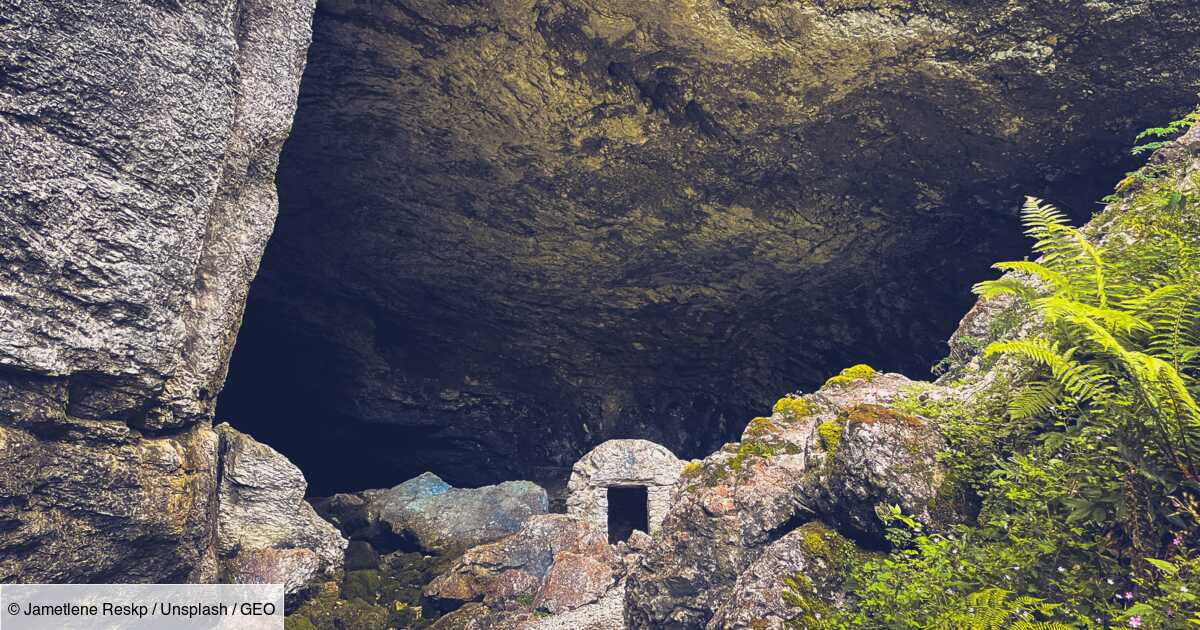The Allegory of the Cave, sometimes called the “Myth of the Cave,” is a philosophical image that appears in Plato's Republic. Here you will find some explanations of this fundamental text of philosophy.
What is the Allegory of the Cave?
The allegory describes a scene in which prisoners live chained in a cave since birth. They sit with their backs to the cave entrance so that they only see the wall in front of them. Behind it, between the entrance to the cave and the prisoners, is a wall where people walk past with objects and which is illuminated by an external light. The shadows of these objects are projected onto the wall in front of the prisoners.
For the latter, shadows are the only reality they know. They give shadows names and meanings and believe they are the real world. They are unaware of the existence of the outside world, sunlight and the real objects that create shadows.
One day one of the prisoners is freed and led to the exit of the cave. He is blinded by the sunlight and can hardly believe what he is seeing. If he perseveres, he will understand that what he has seen since birth is just an illusion. He can then return to the cave to impart knowledge to those around him. However, they may refuse to believe it.
⋙ What is Enlightenment philosophy?
What is the origin of the myth of Plato's cave?
The allegory of the cave appears in Book VII of the Republic, a philosophical work by Plato written in the form of a dialogue. In it, Socrates discusses with several interlocutors, including Glaucon, and introduces the allegory of the cave.
In all likelihood, Plato was influenced by the writings of the Pythagoreans when writing his allegory. Pythagoras also followed the teachings of Pherecydes of Syros in a cave. Plato would have taken these elements from a book he purchased from a Pythagorean philosopher named Philolaus of Crotone.
⋙ What is the history of the Parthenon, symbol of ancient Greece?
What four ideas are supported by the allegory of the cave?
Plato uses the allegory of the cave to illustrate key philosophical ideas. The difference between the sensible world and the intelligible world: The cave represents the sensible world, which is a world of appearances.
Outside is the intelligible world, the world of ideas and truth. Plato attacks preconceived ideas here: We must not believe what our senses perceive. Absolutely Good: When leaving the cave, the prisoner is blinded by the sunlight because he only knew shadows. This means that the search for the ultimate knowledge, that of the good, is difficult.
⋙ Secret of the “Diving Tomb”: What does this ancient Greek fresco really represent?
However, it is important to see the good in order to behave wisely. The duty of education: Just as the liberated person returns to the cave to free his fellow human beings from ignorance, the philosopher must bring people knowledge and give them access to the intelligible world. This is difficult because of the denial of reality, beliefs and prejudices that men display.
Dialectics: To gain access to higher intelligible objects, the philosopher resorts to dialectics without resorting to his senses. Dialectics is a process of questioning and discussion that aims to access the truth by eliminating false or incomplete opinions.
Without dialectics, an educated person can only access lower intelligible objects. The uneducated man, on his part, has only prejudices.
On the same topic:
⋙ How psychoacoustics reveals the sonic secrets of an ancient Greek sanctuary dedicated to Zeus
⋙ What you may not have known about Apollo, the Greek deity
⋙
Who was Midas, the king of Greek mythology who turned everything he touched into gold?

